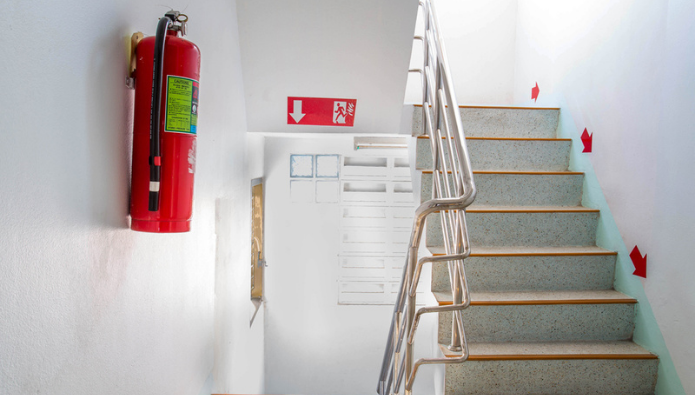In the wake of the Grenfell Tower tragedy, fire safety - particularly for residents - has increasingly taken centre stage in recent years.
One result of this is that penalties for landlords whose properties aren’t compliant with current fire safety regulations have become more common and more severe.
Penalties for not adhering to fire safety regulations can vary according to the offence, but they can be alarmingly high and are becoming harsher with the average post-Grenfell fine being £27,519 which is 35 per cent higher than the 2014 to 2019 average.
The recent Grenfell Tower Inquiry Phase 1 Report noted that fire doors play an essential role in preventing or inhibiting the spread of smoke and toxic gases and that fire doors in Grenfell Tower didn’t act in the way they should have due to them being damaged or in disrepair.
As a result, the inquiry has recommended that owners or managers of every residential building containing separate dwellings carry out an urgent inspection of all fire doors to ensure they comply with current legislative standards.
Below, we outline what the current fire door legislation is, and how you can ensure that the fire doors in your property adhere to guidelines.
Current fire door legislation - When do you need a fire door?
In domestic buildings, a fire door is needed in the following scenarios:
- In domestic dwellings above two levels, every door leading to a stairwell must be a fire door where it leads to a habitable room;
- In loft conversions;
- Between a house and integral garage;
- Between business and residential spaces in a mixed use building.
It was historically ambiguous as to whether the above guidelines included flat entrance doors, however the Fire Safety Act 2021 specifies that all flat entrance doors should be fire doors and they must provide fire resistance for at least 30 minutes.
Fire door guidance for non-domestic buildings is determined on each building and its escape routes. The building plans should outline where the fire compartments are and therefore where fire doors are needed. If you’re unsure, you can get a third party accredited fire risk assessor to look at your requirements.
Below, we’ve listed the necessary checks to carry out on fire doors to ensure they’re in line with current legislation. The owner or manager of the property should be able to perform these checks themselves without enlisting the help of a professional.
Certification - The fire door itself should have a label, plug or similar marking on the door showing it’s a certified fire door. All ironmongery such as locks, latches, door closers and hinges must also be CE or UKCA marked and be compatible with the door leaf’s certification. You can check this by consulting the test evidence and data sheets, or get in touch with the manufacturer. They must be fixed firmly, with no screws missing.
-
Apertures - Any apertures in the form of windows or air transfer grilles must be compatible with the door leaf and should also be fire stopped through the use of an intumescent glazing system or intumescent air transfer grilles. If your flat entrance door has a letterbox, it should be an intumescent letterbox to ensure the door retains its integrity in the event of a fire.
-
Gaps & Seals - There should be a gap of no more than 3-4mm around the door and the door frame. Intumescent strips should be fitted at the top and sides of the door. Whether this is fire only intumescent strip or fire and smoke intumescent strip depends on whether the door is a fire door or a fire and smoke door. The gap at the bottom of the door should be no more than 8mm. If it’s a fire and smoke door, it should be no more than 3mm. If it’s larger than this, a drop down seal can be used to close the gap. A gap between the door and floor can sometimes occur after flooring or carpet has been replaced in a property. In these cases, a drop down seal is an effective solution to ensure the door remains compliant.
-
Closers - Door closers should be fully functioning and close onto the latch from any position with ease. You should also advise tenants that these should not be propped open in any way as they will not function as needed in the event of a fire.
-
Operation- The whole door assembly should close correctly and easily around all four sides. Should you notice any issues when inspecting your fire doors in line with the above checks, you may need to involve a specialist to assist you in rectifying the problems.
* Anthony Robins is the director of FireSealsDirect *
We're excited to announce that we're working on building a shiny new website for readers of Landlord Today! As part of this process, commenting on articles will be temporarily disabled. We look forward to sharing our new and improved Landlord Today website with you shortly!








.png)

(1).png)




